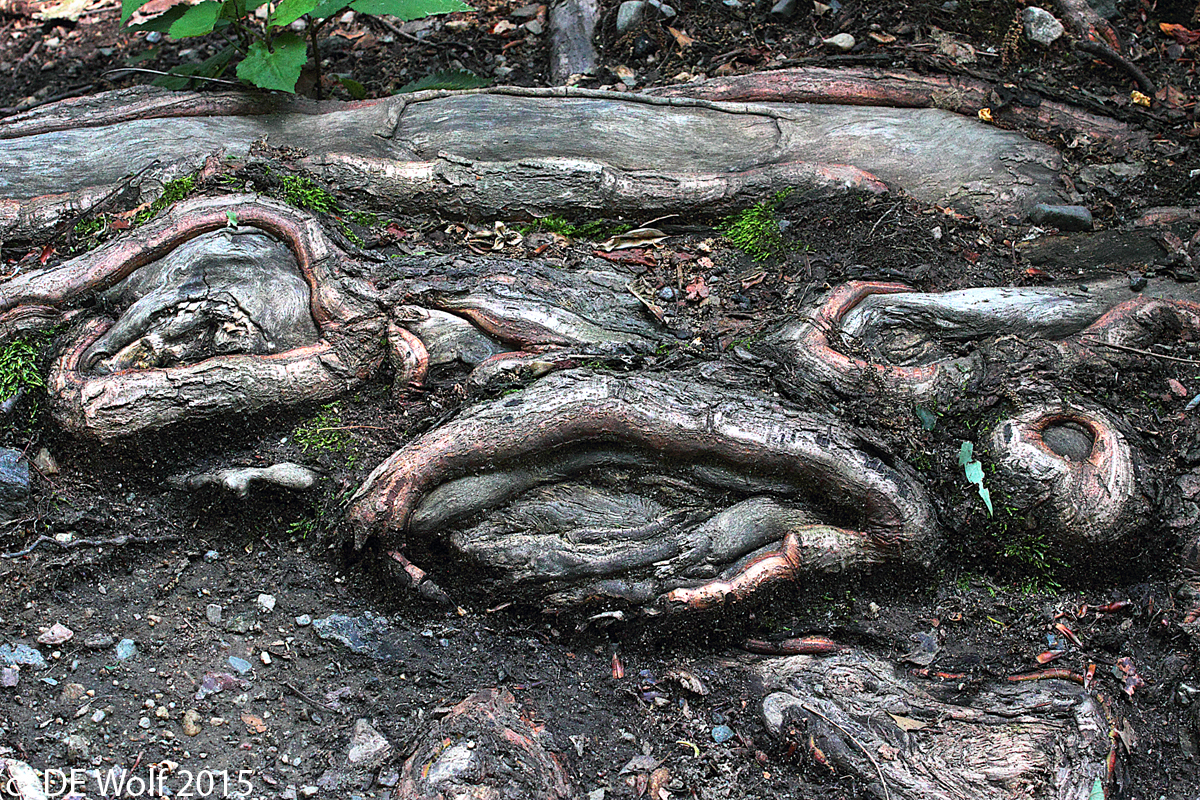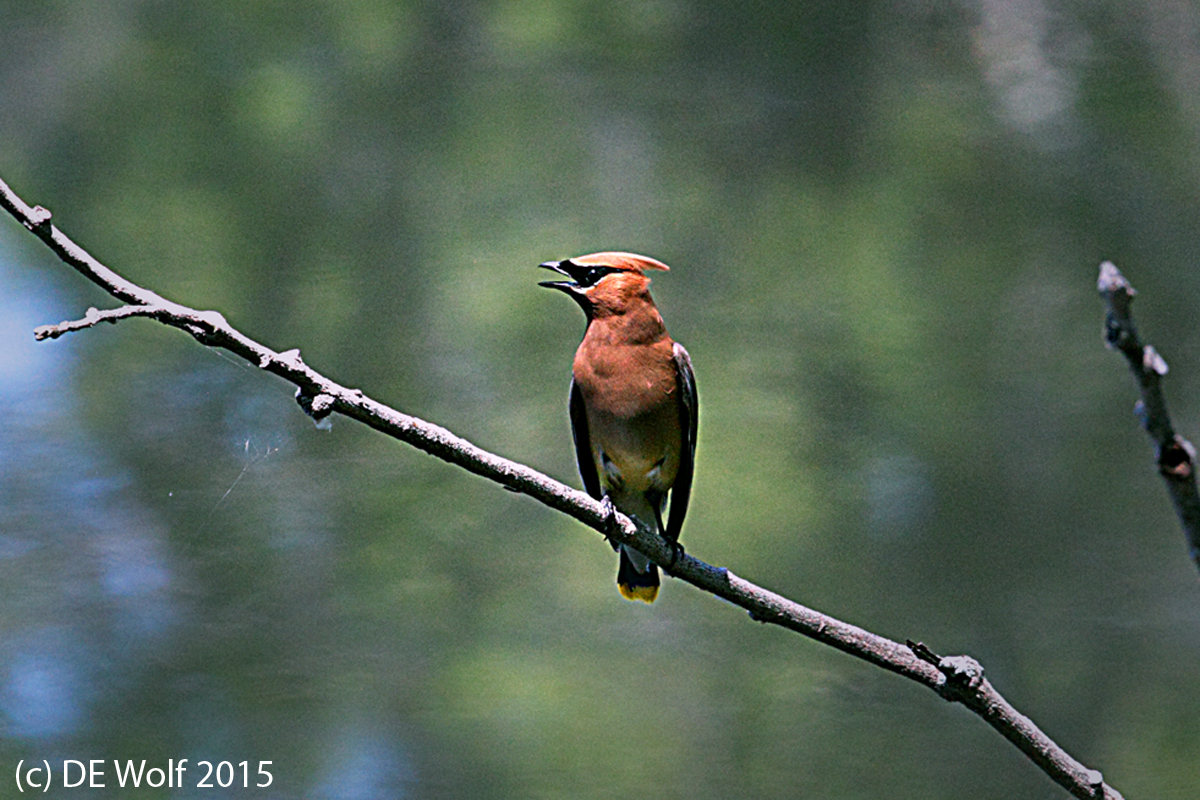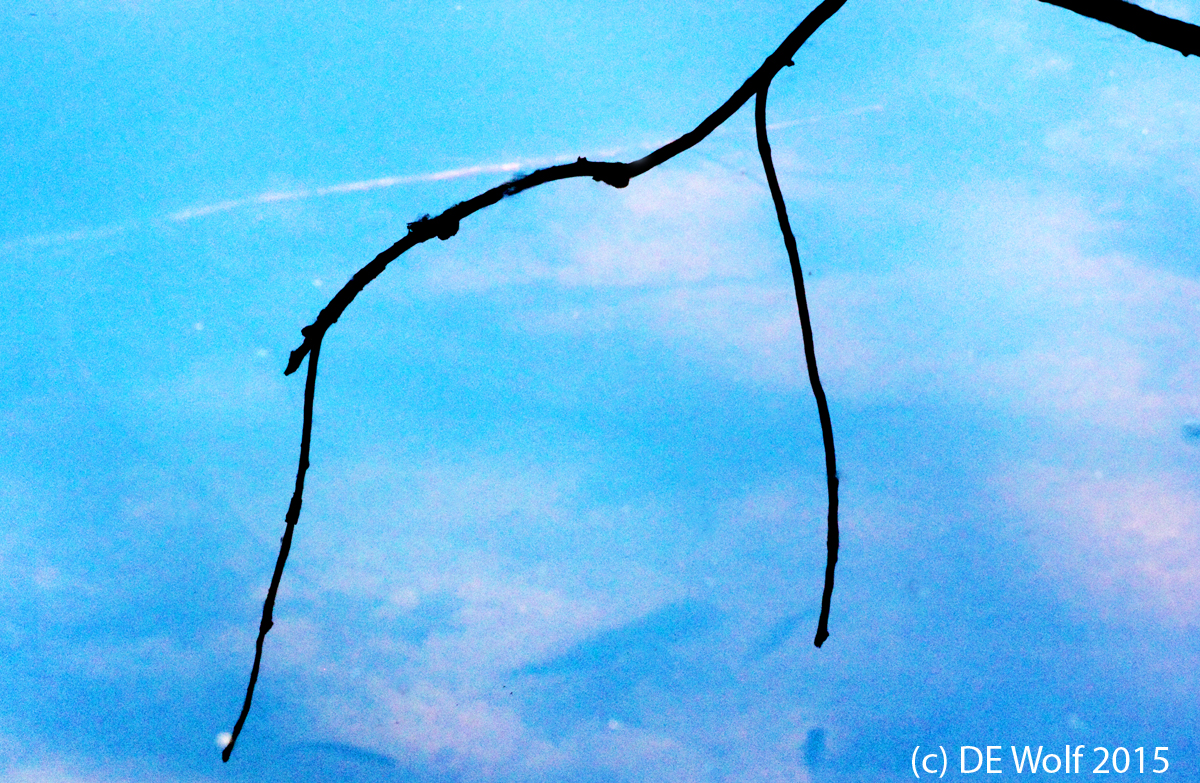There is a region of the Fresh Pond Reservation that is referred to as the Glacken Field, where it is almost invariably shady, and you have enter a little forest. You go “into the woods” and you know what that means! My mind invariably begins to wander from its most scientific task of searching out and identifying bird species to one more mythic and primordial. It was here that I found Merlin’s tree and the Lady of the Lake. It is such a magical place with mysterious steps leading up the hill into the woods, as if to “a secret garden.”
In several places the well-worn tree roots breach the path. These invariably turn my memory to the not so encouraging, yet existential, quote from William Cullen Bryant’s “Thanatopsis:”
“Thy image. Earth, that nourished thee, shall claim
Thy growth, to be resolved to earth again;
And, lost each human trace, surrendering up
Thine individual being, shalt thou go
To mix forever with the elements,
To be a brother to the insensible rock
And to the sluggish clod, which the rude swain
Turns with his share, and treads upon.
The oak Shall send his roots abroad, and pierce thy mould.”
But also I begin to look for patterns, for faces. The troll of Figure 1 is such a pareidolia.
The news has been so terrible lately that the world seems destined to desolation and decay that I saw Cthulu in this face. Cthulu derives and evolves from the writings of H. P. Lovecraft. The mythos focuses on ancient imagined deities often referred to as “Great Old Ones.” The most powerful of these is Cthulu himself. These are terrible gods that once ruled the world. But they are now dormant, imprisoned beneath the sea or Earth. They are dormant, but watchful, and will rise again when mankind itself degrades to such a point that the cosmos frees them.
This is what I was thinking about when I took the image of Figure 1. Perhaps it would be best to get back to the birds. We have become so good at ignoring the terrible, of keeping our eyes in the trees and not looking down at an inhumane world.
““Yog-Sothoth knows the gate. Yog-Sothoth is the gate. Yog-Sothoth is the key and guardian of the gate. Past, present, future, all are one in Yog-Sothoth. He knows where the Old Ones broke through of old, and where They shall break through again. He knows where They have trod earth’s fields, and where They still tread them, and why no one can behold Them as They tread.”
H.P Lovecraft “The Dunwich* Horror”
* Dunwich is a “mythical” town in Massachusetts
Canon T2i with EF70-200mm f/4L USM lens at 75 mm, ISO 1600,Aperture Priority AE Mode, 1/500th sec at f/7.1 with -1 exposure compensation,






